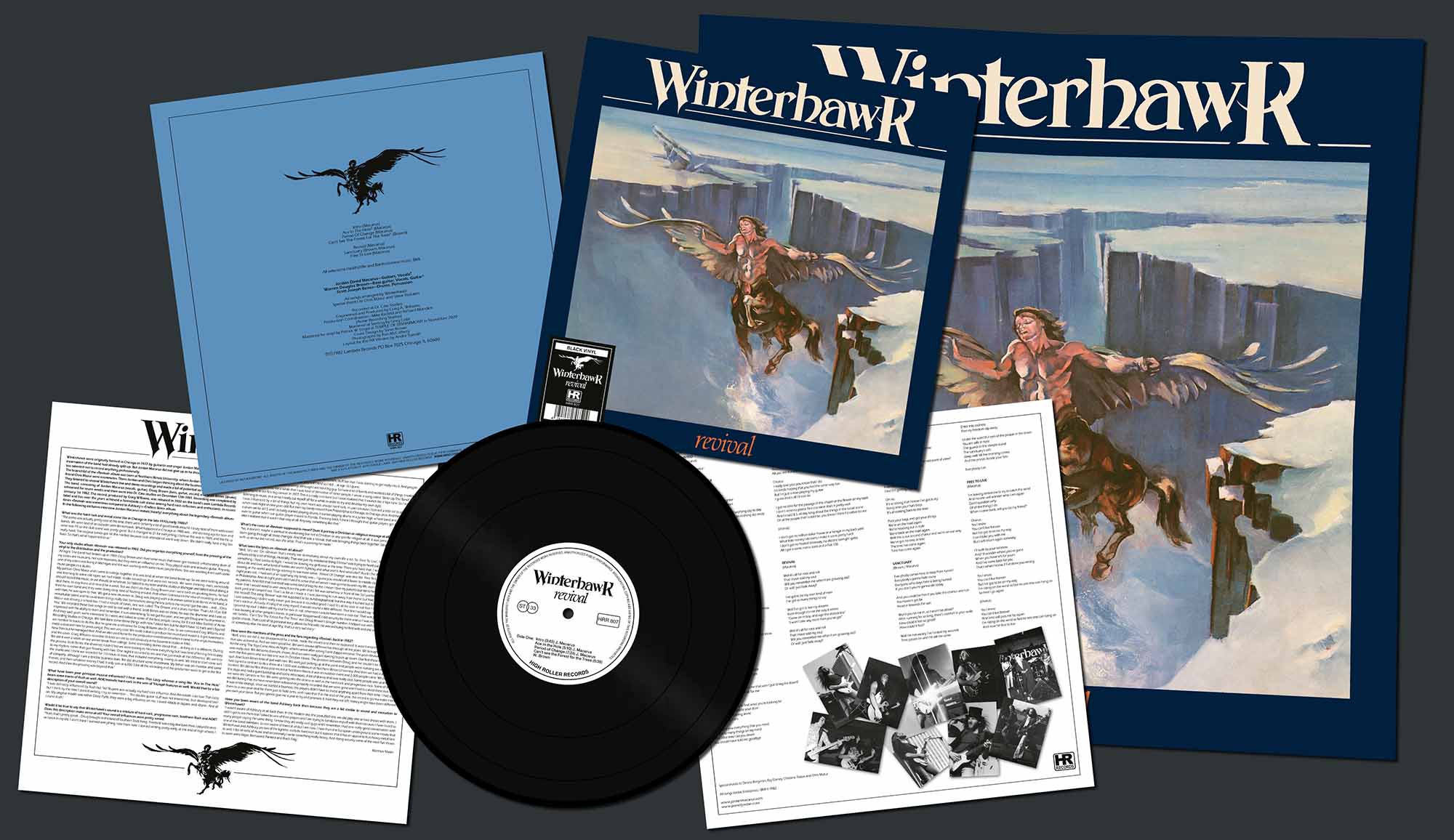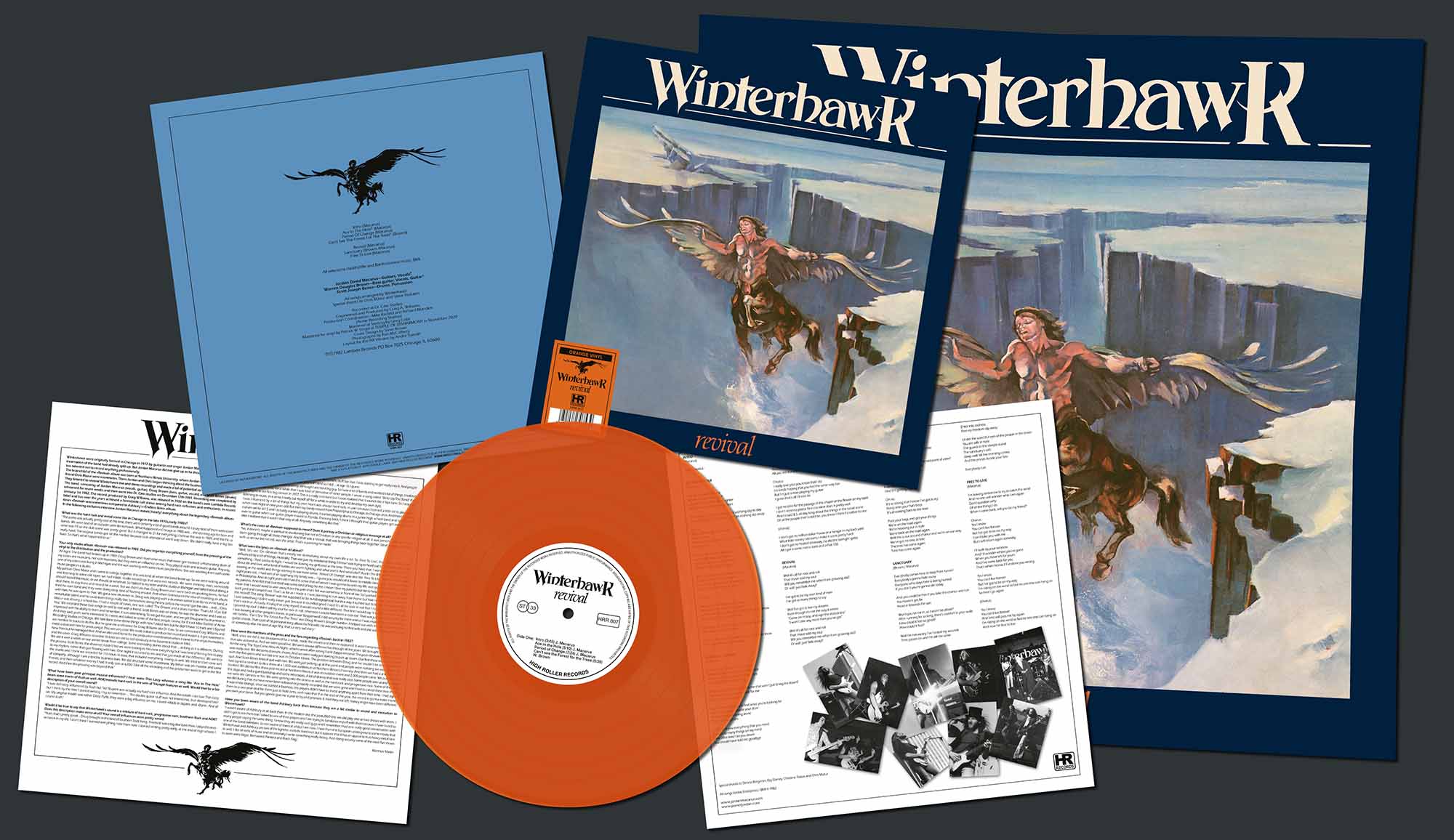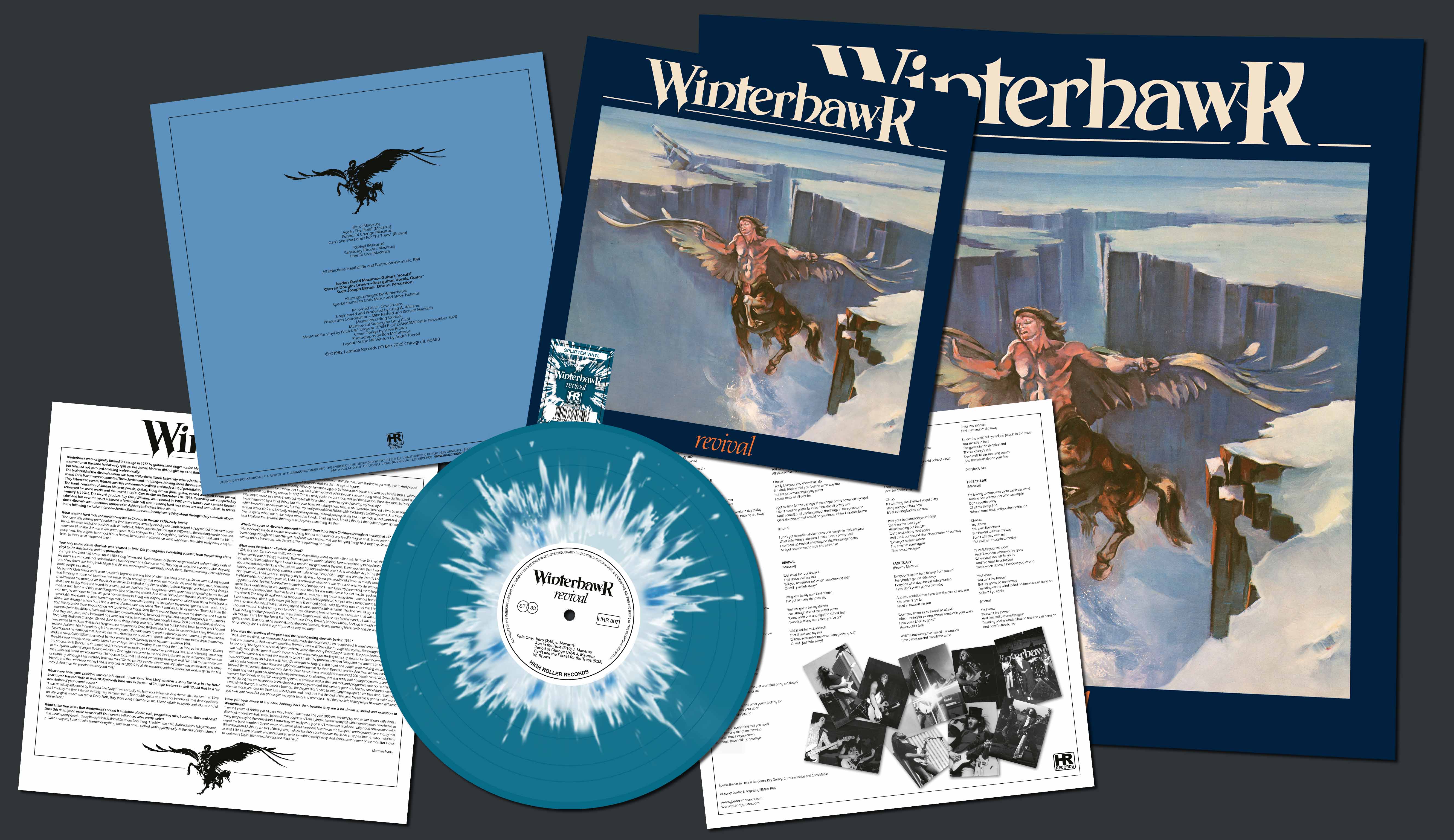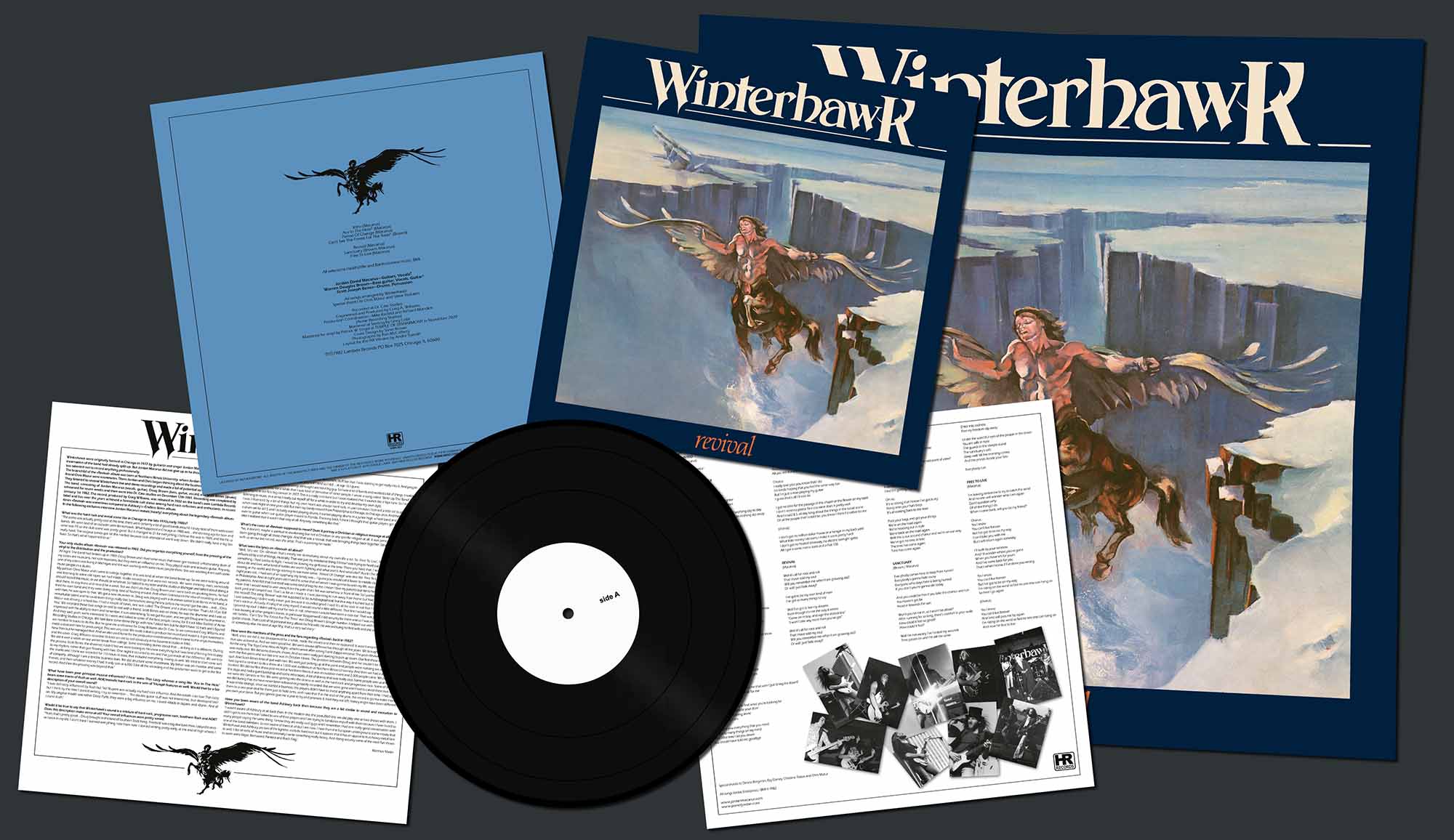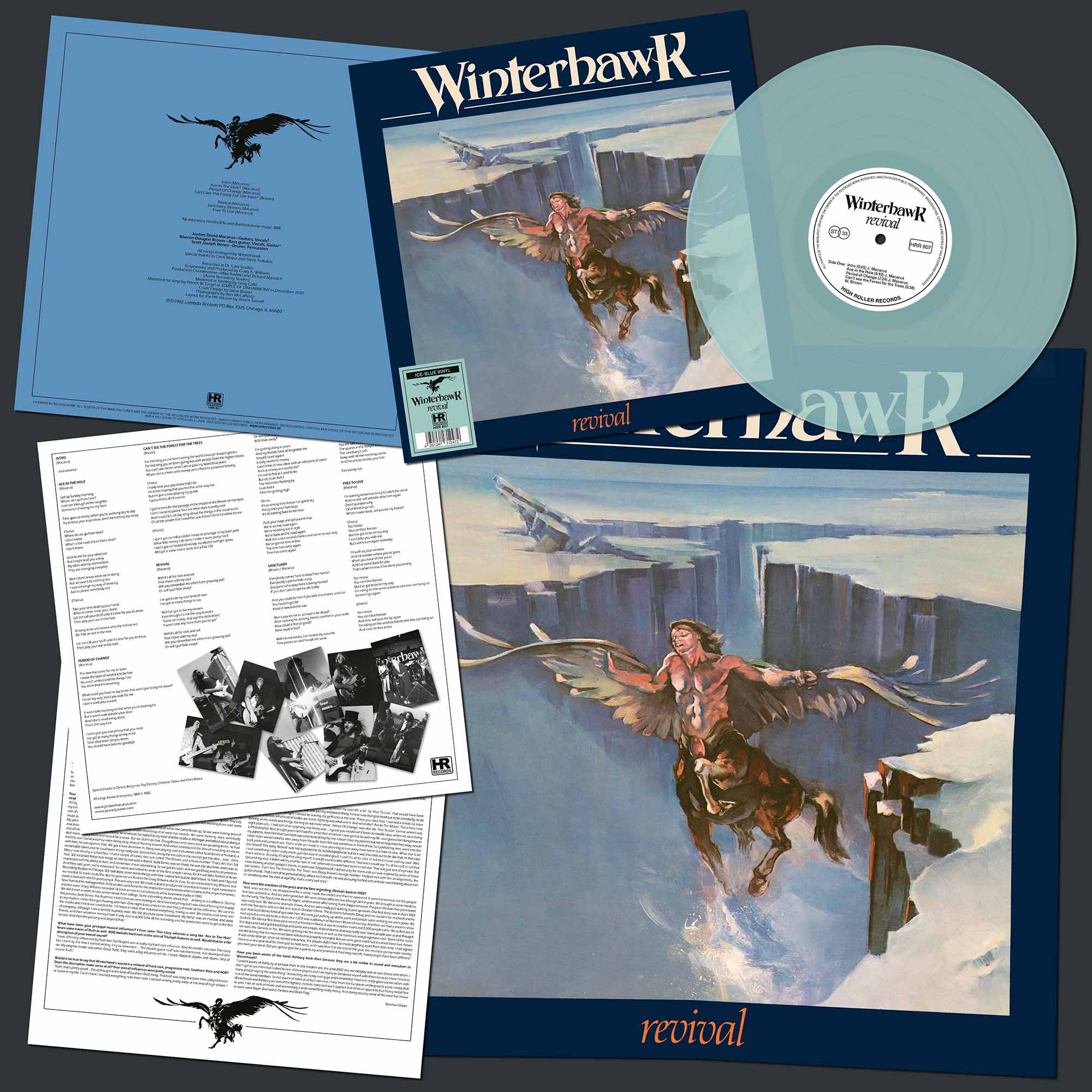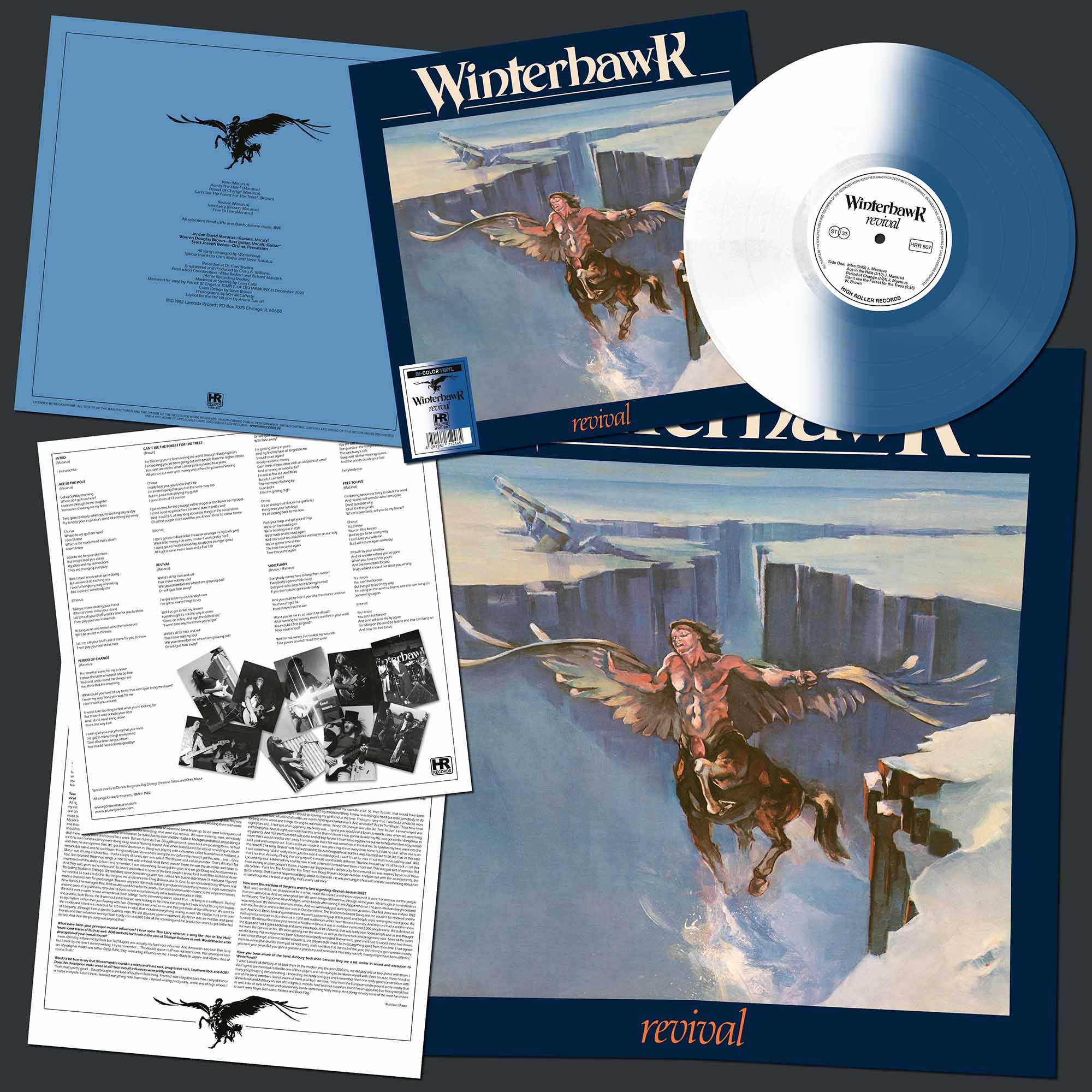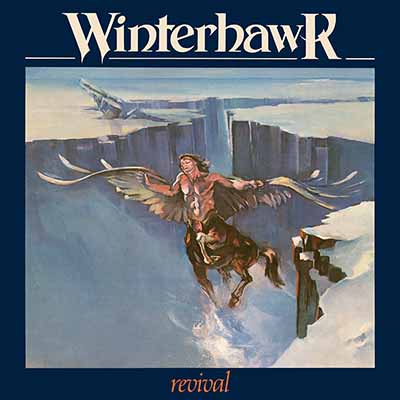 | ||||
| WINTERHAWK - Revival LP | |
HRR 807, ltd 500, 200 x black, 150 x orange + 150 x blue/ white splatter vinyl, 425gsm heavy cardboard cover, insert printed on uncoated paper, poster, 2nd pressing: ltd 1000, 400 x black, 400 x blue jay/ white bi color + 200 x transparent electric blue vinyl | |
| Jordan David Macarus - guitars, vocals Warren Douglas Brown - bass, vocals, guitar Scott Joseph Benes - drums & percussion | |
| 01 Intro 02 Sanctuary 03 Period of Change 04 Can't See the Forest for the Trees 05 Revival 06 Ace In the Hole 07 Free to Live | |
| 1st pressing: LAST COPIES! 2nd pressing: AVAILABLE | |
Mastered for vinyl by Patrick W. Engel at TEMPLE OF DISHARMONY in November 2020. Cutting by SST Germany on Neumann machines for optimal quality on all levels... the ultimate audiophile reissue
Winterhawk were originally formed in Chicago in 1977 by guitarist and singer Jordan Macarus. By 1980, the original incarnation of the band had already split up. But Jordan Macarus did not give up as he thought Winterhawk were just too talented not to record anything professionally.
The brainchild of the »Revival« album was born at Northern Illinois University, where Jordan Macarus and his longtime friend Chris Mazur were roommates. There Jordan and Chris began thinking about the business of producing an album. They listened to several Winterhawk live and demo recordings and made a list of potential songs.
The band, consisting of Jordan Macarus (vocals, guitar), Doug Brown (bass, guitar, vocals) and Scott Benes (drums) rehearsed for seven weeks and then went into Dr. Caw studios on December 17th 1981. Recording was completed by January 1st 1982. The record, produced by Craig Williams, was released in 1982 on the band’s own Lambda Records label and has over the years achieved a formidable cult status among hard rock collectors and enthusiasts. In recent times »Revival« was sometimes compared to Ashbury’s »Endless Skies« album.
In the following exclusive interview Jordan Macarus reveals (nearly) everything about the legendary »Revival« album.
What was the hard rock and metal scene like in Chicago in the late 1970s/early 1980s?
“The scene was actually pretty cool at this time, there were certainly a lot of good bands around. I’d say most of them were cover bands. We were kind of an outsider with Winterhawk. What happened in Chicago in 1980 was … the drinking age for beer and wine was 19, so the club scene was pretty good. But it changed to 21 for everything, I believe this was in 1980, and this hit us really hard. The original bands got hit the hardest because club attendance went way down. We didn’t really have a big fan base. So that’s what happened to us.”
Your only studio album »Revival« was released in 1982. Did you organize everything yourself, from the pressing of the vinyl to the distribution and the promotion?
“All right. The band had broken up in 1980. Doug Brown and I had some issues that never got resolved, unfortunately. Both of my sisters are musicians, not rock musicians, but they were an influence on me. They played violin and acoustic guitar. Anyway, one of my sisters was living in Michigan and she was working with some music people there. She was working there with some music people in a studio.
My partner Chris Mazur and I went to college together, this was kind of when the band broke up. So we were kicking around and listening to some old tapes we had made, studio recordings that were not records. We were thinking, man, somebody should record this music, or we should, or whatever. So I talked to my sister and the studio in Michigan and talked about doing a deal there, to stay there and record for a week. But we didn’t do that. Doug Brown and I were back on speaking terms, he had tried his own band and they were doing okay, kind of floating around. And when I introduced the idea of recording an album with him, he was open to that. We got a new drummer in, Doug was playing with a drummer called Scott Benes in his band, a remarkable talent and he could learn things really fast. Somewhere along the line before the record I got this idea … and … Chris Mazur was driving a school bus. I had a couple of tunes, one was called ‘The Dream’ and a blues number ‘That’s All I Can Tell You’. We recorded those two songs on reel to reel with a friend, Scott Benes was on those, he was the drummer and I was so impressed with his ability to learn and remember, it was astonishing. So we got this plan, and we got Doug and his drummer in. And they said, yeah, we’re interested. So I went and talked to some of the best people I knew, for 8 track Mike Rasfeld of Acme Recording Studios in Chicago. We had done some demo things with him. I asked him but he didn’t have 16 track and I figured we needed 16 tracks to do this. But he gave me a reference for Craig Williams aka Dr. Caw. So we contacted Craig Williams and made a deal with him for producing it. This was very cool. We made a deal to produce the record and master it. It got mastered in New York but he managed that. And we also used Acme for the production coordination when it came to the vinyls themselves, and the cover. Craig Williams recorded 16 track on reel to reel obviously in his basement studio in 1981.
We did it over a week on our winter break from college. Some interesting stories about that … as long as it is different. During the process, Scott Benes, the drummer, I didn’t feel we were locking in. He knew everything but I was kind of forcing him to play to my rhythm, rather than just flowing with him. One night it occurred to me and that just made all the difference. We went to the studio and I think we recorded for 110 hours in total, that included everything, mixing as well. We tried to start some sort of company, although I am a terrible business man. We did structure some investment. My father was an investor, and some friends, and then whatever money I had. It only cost us 6,000 $ for all the recording and the production work to get to the first record. And then the pressing was beyond that.”
What have been your principal musical influences? I hear some Thin Lizzy whereas a song like “Ace In The Hole” bears some traces of Rush as well. AOR/melodic hard rock in the vein of Triumph features as well. Would that be a fair description of your overall sound?
“I was definitely influenced by Rush but Ted Nugent was actually my hard rock influence. And Aerosmith. I do love Thin Lizzy but I think by the time I started writing, I try to remember … The double guitar stuff was not intentional, that developed later on. My original model was rather Deep Purle, they were a big influence on me. I loved »Made In Japan« and »Burn«. And of course Rush.”
Would it be true to say that Winterhawk’s sound is a mixture of hard rock, progressive rock, Southern Rock and AOR? Does this description make sense at all? Your overall influences were pretty varied.
“Yeah, that’s pretty good ... Doug brought in this kind of Southern Rock thing. ‘Freebird’ was a big deal back then. I played it once or twice in my life, I don’t think I learned everything note from note. I started writing pretty early, at the end of high school. I was playing in a cover band, doing some Rush and some Aerosmith, stuff like that. I was starting to get really into it. And people asked me: when do you start writing music yourself? And so I did … at age 16 I guess.
And I also started doing concert security, although I am not a big guy. So I saw a lot of bands and worked a lot of things. I realized once I started to write for a while that I was kind of derivative of other people. I wrote a song called ‘Strike Up The Band’ that we played at our first big concert in 1977. This is a really cool tune but I soon realized that it sounds like a Styx tune. So I stopped listening to music. In a sense I really cut myself off for a while in order to try and develop my own style.
I was influenced by a lot of things but my own heart was always hard rock, in part because I learned a little bit to play guitar when I was eight or nine years old. But then my family moved from Philadelphia to Chicago, to Chicago area. And there I bought a drum set for 60 $ and I actually started playing drums, I started playing drums in a junior high school band and only moved over to guitar when our guitar player moved to Florida. Thinking back, I think I thought that guitar players get more girls but later I realized that it wasn’t that way at all. Anyway, something like that.”
What’s the cover of »Revival« supposed to mean? Does it portray a Christian or religious message at all?
“No, it doesn’t, maybe a spiritual re-awakening but not a Christian or any specific religion at all. It was personal, the band had been going through all these changes. And that was a revival, that was bringing things back together. Steve Brown, who was with us on our live record, was the artist. That’s a painting he made.”
What were the lyrics on »Revival« all about?
“Well, let’s see. On »Revival« that’s mostly me dramatizing about my own life a lot. So ‘Free To Live’, that would have been influenced by a lot of things, musically. That was just my emotional thing. I knew I was trying to head out to be somebody, to do something, I had battles to fight. I would be leaving my girlfriend at the time. There you have that. I wanted a whole lot more about life and love, what kind of battles are worth fighting and what aren’t. And what else? ‘Ace In The Whole’. This is how I was looking at the world and things starting to not make sense. ‘Period Of Change’ was also like ‘Free To Live’. I knew when I was eight years old... I had sort of an epiphany, my family was … I guess you would call it lower to middle class, when we were living in Philadelphia. And at eight years old I had this sense that whatever I was gonna do with my life, was gonna feel dangerous to my parents. And I felt that love itself was some kind of trap for me. I mean I love my parents but me to help them feel okay, would mean that I would need to veer away from the path that I felt was somehow in front of me. So I packed my tent, went into the back yard and camped out. That’s as far as I made it. I was planning to run away from home but had no clue. What else is on the record? The song ‘Revival’ was not supposed to be autobiographical, but in a way it turned out to be like that. In that case I said something I didn’t really mean, just because it sounded good. I said ‘It’s all for rock ’n’ roll that I have sold my soul’. Well, that’s not true. Actually, if I sing that song myself, it would sound a little different. That line I would say ‘it’s all for rock ‘n’ roll that I poured my soul’. I didn’t sell my soul for rock ‘n’ roll, otherwise I would have been a rock star. That was just sort of a phrase. But I was looking at other people’s stories, in particular Steppenwolf. I did security for them and so I was inspired by some of those old rockers. ‘Can’t See The Forest For The Trees’ was Doug Brown’s boogie number. I helped out with the arrangements, the guitar chords. That’s sort of his personal story, about his first wife. He was pursuing his first wife and she was thinking about him or somebody else. He died at age fifty, that’s a very sad story.”
How were the reactions of the press and the fans regarding »Revival« back in 1982?
“Well, since we did it, we disappeared for a while, made the record and then re-appeared. It wasn’t enormous but the people that saw us loved us. And we were good live. We were always different live through all the years. We brought in some theatrics for the song ‘The Toys Come Alive At Night’, which I wrote after seeing Frank Zappa rehearse. The post-»Revival« five-piece band was really cool. We did some dramatic shows. And we were really just starting to pick up steam. Our first show was in April 1982 with the five-piece and our last one was in October I think. The problem between Doug and me couldn’t be resolved and he quit. And Scott Benes kind of quit with him. We were just picking up at this point and people were realizing we were good. We had signed a contract to do a show at a 1,000 seat auditorium at Northern Illinois University. And then we had a another show booked. We did our first show post-record at Northern Illinois, it was an outdoor event and 2,000 people came. We pulled out all the stops and had a giant backdrop and some intro tapes. A lot of drama, that was really cool. Some people saw us and thought we were like Genesis or Yes. We were getting into the drama as well as the hard rock and progressive rock. Some of the tunes we did during that era have never been released or properly recorded. But we were gone and I had to cancel these two shows.
It was kinda strange, since we started a business, the players didn’t have to invest anything apart from their time. I had signed them to a one-year deal for them just to hold onto, and I said that if at the end of the year, the record is gonna make money, you own your piece. But you gonna give me a year to try and promote it. Had they not left, history might have been different.”
Have you been aware of the band Ashbury back then because they are a bit similar in sound and execution to Winterhawk?
“I wasn’t aware of Ashbury at all back then. In the modern era, the post-2000 era, we did play one or two shows with them. I didn’t get to see them but I talked to one of their players and I am trying to familiarize myself with them because I have heard so many people saying the same thing. I know they are really cool guys and I remember I had one really good conversation with one of the band members. So not aware of them at all but I am now. I hear from the European underground scene mostly that Winterhawk and Ashbury are sort of the lightest, melodic hard rock but it appears that it has an appeal to true heavy metal fans as well. I like all sorts of music and occasionally I write something really heavy. And doing security some of the most fun shows to work were Slayer, Biohazard, Pantera and Black Flag.”
Matthias Mader
